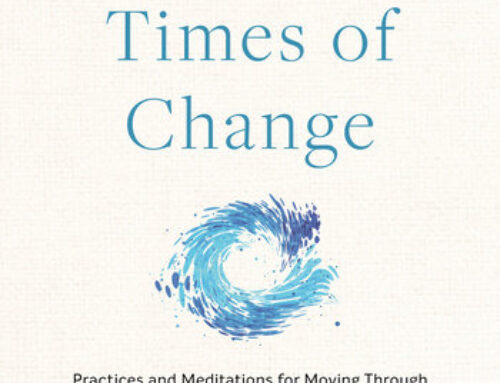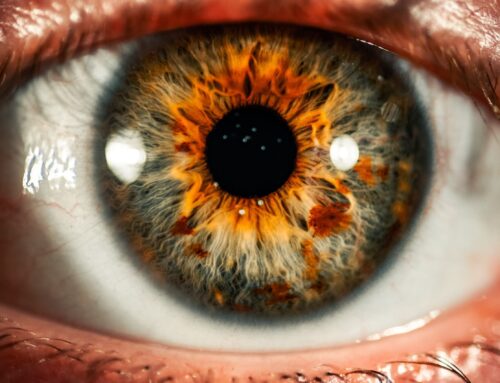Pushing Boundaries in Physiotherapy: TEDx Talk by Shelly Prosko
As a physiotherapist and yoga therapist for over 20 years, I am aware of the therapeutic benefits of yoga and some of the limitations of our current healthcare system and I teach other healthcare providers about the integration of yoga into our healthcare system on a regular basis. However, after sustaining a traumatic orthopedic injury myself, I had the opportunity to be a patient and experience first hand what it was like to go through our healthcare system.
Even though I was discharged from the ER and told that rehabilitation wouldn’t start for another 2 months, I knew there were many aspects of my recovery that still needed to be addressed to optimize healing. I knew I could, and would, immediately start my own form of rehab using yoga as my therapy in a safe, modified and evidence based way, which included integrating the knowledge, skills and experience I have as a physiotherapist as well.
The first few weeks after any injury is so important for healing. All of our physiological systems must be given the opportunity to function optimally in order to heal to our highest potential. This means we must offer an environment that is conducive to healing: one that promotes a sense of safety for the nervous system which results in tissue repair and healing all aspects of our existence after any trauma (regardless of ‘intensity’ or perceived level of the trauma). In orthopedic rehab we typically just focus on the physical layer (kosha). However, the other 4 layers of our existence are equally important to address, even in the acute stages post-injury (mental, emotional, energetic and spiritual). This biopsychosocial-spiritual approach to all divisions of therapy is essential if we want to treat the whole person instead of the diagnosis.
I felt a responsibility to share this message while recovering from my own injury, as this is part of my life mission: to integrate yoga therapy into our modern healthcare system by inspiring, empowering and educating people through wisdom, love, truth and joy.
I had the honour of giving a TEDx talk about “Pushing the Boundaries in Physical Therapy” where I share my story and outline how and why I successfully used yoga as part of my rehabilitation. There is a 5 min guided body scan meditation that I shared with the audience at the end; so you can enjoy that as well HERE
I started a YouTube Channel that follows my progress using ‘PhysioYoga’ in the rehabilitation of my Achilles Tendon Rupture on Dec.22, 2013.
The video playlist of all 13 rehab videos is HERE
I also wrote a short blogpost in “Yoga for Healthy Aging” BlogSpot about the injury and how I used yoga in the acute stages of recovery: “Sudden Acute Traumatic Injury”
Below is a summary of each practice with the FREE LINK to each video practice from day 7 to 8 months post rupture. My intention is to shed light on what rehabilitation can optimally look like, to increase awareness of health care professionals and patients, and to help those recovering from any injury to feel inspired, empowered and offer hope and support; especially in the initial stages when often times rehab has not yet been initiated. Please share with anyone you think may benefit:
Day 7 PhysioYoga practise in lower leg cast: 7 days post complete Achilles rupture. Demonstrating that rehabilitation is much more than just about rehab of the injured body part
Week 3 PhysioYoga practice in boot cast. Chair and Mat Yoga poses, weight bearing progression with crutches (25%), ankle ROM within restrictions.
Week 4 Demonstrating PhysioYoga rehab session including: standing balance yoga poses, TATD breath method and Pilates mat core exercises 4 weeks post Achilles rupture (non-operative).
Week 6 Demonstration of PhysioYoga used in progressing weight bearing status and gait training activities (6 weeks post-Achilles rupture). Biopsychosocial approach (all 5 koshas) discussed. Including embracing & observing emotional layer.
Week 7 PhysioYoga rehab: Body Scan Meditation of awareness, Mantra Meditation, Nadi Shodana Pranayama (Breath Meditation), Nature Connection (nourishing Anandamyakosha), Physical Therapy ROM and Theraband strengthening exercises for ankle: all part of post Achilles Tendon Rupture rehab. In healing nature of
Sedona, AZ.
Week 8 First Physical Therapy Rehab Session at 8 weeks post-Achilles rupture, non-operative approach. Includes standing and supported one- leg standing with boot cast off for the first time.
Week 11 Demonstrate more advanced gait and balance training and incorporate a holistic approach to rehab by using creative yoga dance combined with appreciation of fresh air and breath in nature: filmed in
Okanagan, BC, Canada.
Week 14 Today’s Physioyoga rehab includes: exercises and yoga methods addressing gait training and stair descension, balance, and specific ankle strengthing and flexibility activities. Nerve flossing and MET included. A comparison of gait pattern and ability to descend steps before and after rehab is included.
6 Months Rehabilitation continues at 6 months post complete Achilles Tendon Rupture (non-surgical approach). In today’s session, I attempt a one legged heel raise and demonstrates different ways to improve strength and function of the gastroc/soleus muscles. Also demonstrate my progress with gait pattern and stairs. Entire session is
outdoors today!
8 Months Starting to incorporate plyometrics, agility drills, and I even attempt to jump rope for the FIRST time after my rupture (which was the initial mechanism of injury)!!
13 Months Return to figure skating! Demonstrating the importance of gastroc strength and power during one foot corkscrew spin. Skulling (double and single) and jumping also parts of ‘Skating Rehab’.
Lastly, this is a nice resource for anyone that is using crutches and needs some guidance or a few tips for crutch walking and manipulating steps with crutches:
I hope my
TEDx talk helps physiotherapists and other healthcare professionals realize that rehabilitation isn’t just about ‘fixing’ the body part, but includes creating an environment in which to optimize the body’s natural ability to heal. Part of our role as the therapist is to be a safe guide or facilitator throughout the process.
Remember that yoga is so much more than those fancy instagram poses our current culture is accustomed to seeing! It is a system of health and a philosophy, and can be used safely and effectively as an adjunct to rehabilitation if it is delivered appropriately and unique to the needs of each individual.
**This article is not meant to act as medical advice, nor to replace your current treatment. Please seek clearance and guidance from your licensed healthcare professional prior to participating in any of the tips, advice, practices or movements mentioned in this article.





Thank you for your sincerity and passion for using yoga as a tool for healing after an injury. I broke four bones in my foot and one in my ankle 9 weeks ago. I stumbled upon your physioyoga in a cast video when I was looking for tips on how to use crutches on stairs a few weeks ago when I was still in a boot. I had very little instruction on how to use crutches and needed help. I have had a regular home yoga practice for years and started using some of your suggestions to start back up after feeling like I could not do yoga with a cast. It has helped so much! I have been full weight bearing without a boot for 2 and a half weeks now and just watched week 6 for tips on improving my gait. Even though I go to physical therapy twice a week and do the exercises every day, I feel like I got more help just from this video. I especially appreciated you sharing the emotional challenges. I’ve been trying to stay positive and focus on the progress and what I can do now, but it can still be discouraging after so long. Thank you!
Hi Betty,
Thank you for taking the time to comment and for sharing your story and experience.
First, it means a great deal to me that the videos are somehow helping you on your rehab journey. My intention in creating and sharing them in ‘real time’ was for that reason indeed — to help those that may be going through a similar experience.
Second, congratulations on taking the time, energy and effort to look up some things to help support you on this healing path. As I mention in the TEDx talk, we do tend to forget that when we have a body part that has been injured, there are so many different aspects of our self that are affected, and in order to optimize rehabilitation and healing of the ’tissue’, it can be very helpful to address all factors that influence this tissue healing.
Thanks again for taking the time to leave the comment.
Wishing you all the best on your journey and perhaps you end up experiencing or learning something from this that you may not otherwise would have!
in kindness,
shelly
I came across the term “Physioyoga” mere hours ago as I was looking to start a new yoga practice as a means to fix my upper cross syndrome. Then, I stumbled upon your website and felt that I was introduced to a whole new world.
As a recent Physiotherapy graduate and as a patient, I had fun looking through all these wonderful resources you have put together and provided. Your view and advice really resonates with me. Thank you!
Hi Yvonne,
Thanks for the kind words and for taking the time to comment!
I’m glad to hear you enjoyed looking through some of these resources.
Feel free to check out some of my other resources on this website.
I have several articles, other YouTube videos on different topics related to physiotherapy + yoga, Vimeo videos, book, online/onsite courses, free blogs and podcasts if you feel inspired or interested in exploring more!
We also have a wonderful FB group: Bridgebuilders to Awareness in Healthcare: we are a group of rehab professionals who integrate yoga into our profession – join us on there if you like!
I like your tip about doing yoga for physiotherapy. That makes sense considering you want to remain flexible for all the future workouts. I’ll have to consider your tips so that I can recover from all my wounds.